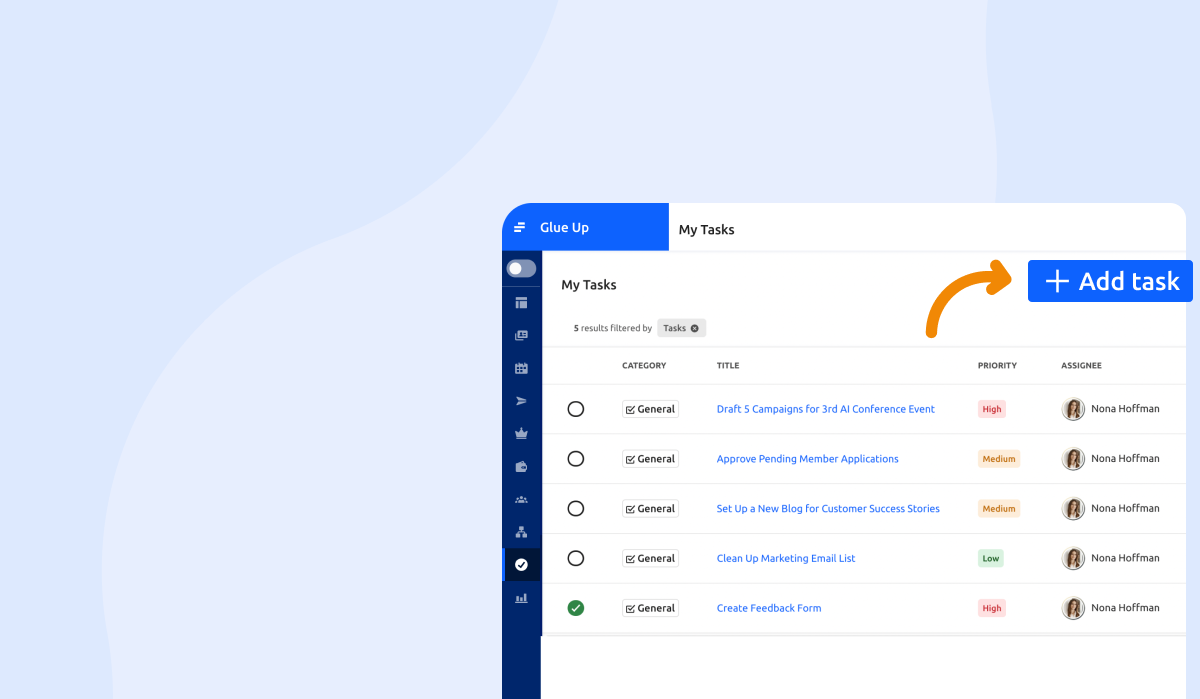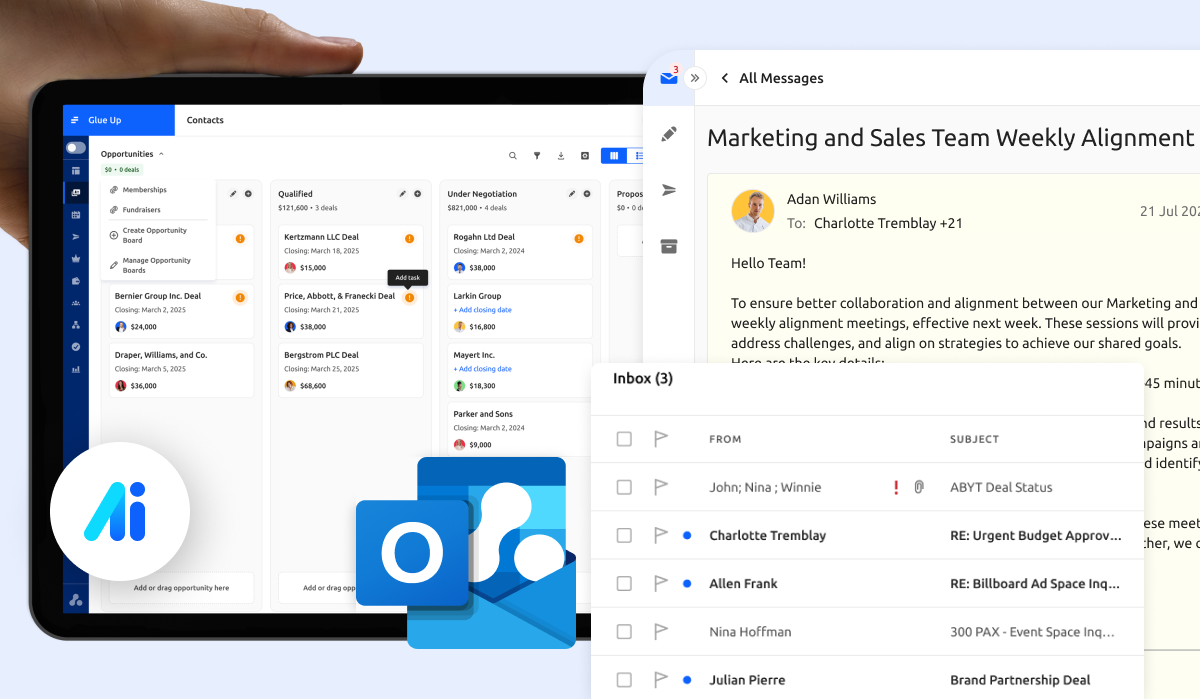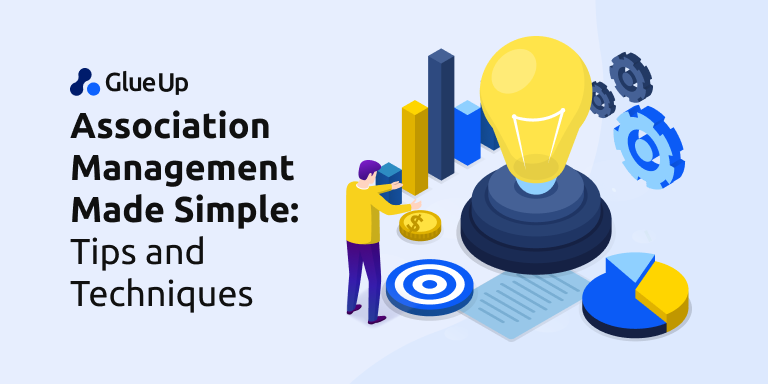
A CRM helps your organization streamline operations, but an advanced CRM takes it a step further by driving growth. It increases efficiency and helps your organization excel. However, integrating such a system comes with challenges.
Association leaders often face questions like:
- Does the chosen system align with our specific needs?
- Is the CRM worth the investment?
- Will it simplify processes or create complications?
- Can the vendor provide reliable support and excellent customer service?
These concerns can leave decision-makers hesitant about adopting new systems. But what if we clear all these doubts? By the end of this blog, you'll be equipped to confidently select the CRM best suited for your association and ensure it seamlessly supports your goals and growth.
What an Advanced CRM Should Offer

First things first, you must understand what sets an advanced CRM apart to make the right choice.
Although a basic system may handle contact management and simple processes, an advanced solution offers a range of must-have features designed to help your organization achieve efficiency and growth:
Centralized Member Data
The system must manage all member profiles, communications, and interactions in one place and confirm that your team has instant access to accurate and up-to-date information. 39% of organizations struggle with data quality, which can hinder overall CRM performance.
Customizable Opportunity Pipelines
You must be able to track multiple initiatives such as memberships, sponsorships, events, and fundraising through customizable pipelines. This allows you to monitor progress and outcomes effortlessly.
Automated Communication and Follow-Ups
Automating member outreach, event invitations, and follow-up reminders through email or SMS makes sure no touchpoint is missed while saving valuable time.
Integrated Event Management
It should seamlessly coordinate event registrations, attendance tracking, and post-event surveys and keep everything linked to member records for future reference.
Revenue Forecasting and Analytics
Gain insights into future revenue streams based on deals, renewals, and event income. Real-time reporting helps you plan budgets and allocate resources efficiently. 48% struggle with creating customer insight to drive decision-making, which makes robust analytics essential.
Task and Workflow Automation
Automating routine tasks, approvals, and membership renewals reduces manual work and enables your team to focus on strategic growth initiatives.
Mobile Accessibility
Your team must be able to access key features on the go using mobile-friendly dashboards or dedicated apps, or it must promote quick decision-making and flexibility.
Seamless Integration with Key Tools
It should connect with essential tools like email platforms, accounting software, and marketing automation solutions and ensure streamlined operations without data silos.
Sixty-eight percent of organizations struggle with getting a single view of the customer, which makes seamless integration critical for success.
These features help drive engagement, retention, and growth. An advanced CRM with these capabilities will keep your organization efficient, well-organized, and ready for future success.
Define Your Organization’s Goals Before Choosing a CRM

Understanding exactly what your organization aims to achieve is the foundation of selecting the right CRM. According to reports, 82 percent of enterprises use CRM, but many face challenges such as poor alignment with organizational needs, which can lead to underperformance.
Here’s how to set your goals and guarantee the CRM fits your needs:
1. Identify Key Objectives
Determine the primary outcomes you need from the system. Focus on whether you want to improve member retention, boost engagement, increase sponsorship revenue, or streamline event management.
2. Segment Goals by Departments or Initiatives
Different teams often manage memberships, events, and sponsorships separately. Break down goals by function so the CRM can cater to each area effectively. For example:
- Membership Team: Retaining current members and attracting new ones
- Event Team: Managing event registrations and improving attendance
- Finance Team: Tracking revenue from membership fees, events, and sponsorships
3. Set Measurable KPIs
Establish specific metrics such as retention rate, membership growth, event attendance, or revenue growth. These KPIs will help assess how effectively the CRM contributes to success.
4. Prioritize Requirements
Listing essential features certifies your goals are met. For example, organizations focused on retention should prioritize member communication tools and automated follow-ups.
5. Plan for Future Growth
Organizations must also consider scalability. A CRM that supports growth and adapts to changing needs prevents the need for frequent system upgrades.
Defining goals confirms that the CRM is more than just a data management tool. It becomes a valuable asset that helps drive engagement, retention, and long-term success.
Examples of Advanced CRMs in Action

Let's consider Glue Up’s Advanced CRM package as an example to better understand. The package is specifically designed to help member-based organizations overcome common challenges and achieve long-term growth.
Its powerful features will equip your team with the tools they need to manage tasks efficiently and boost revenue. Let’s take a closer look at how these features set Glue Up apart as an advanced CRM solution:
1. Outlook Integration
Stay in control of your member communications without juggling multiple platforms. The Outlook Integration features help your team send, receive, and organize emails directly within the system.
Emails can be linked to specific CRM profiles, which create a centralized record of interactions for easy tracking and collaboration. Customizable access guarantees that privacy and data security are never compromised, allowing your team to work confidently and stay informed.
2. Forecast View
Forecasting revenue becomes simpler and more accurate with Forecast View. This feature allows you to predict future income based on each deal’s stage and expected close date.
Forecast View automatically adjusts projections whether a deal is won or lost and gives you a clear understanding of your organization's financial position.
This helps you plan budgets, allocate resources, and make data-driven decisions that guide your association’s growth.
3. Multiple Opportunity Boards
Member-based organizations often juggle multiple initiatives, from growing memberships to managing events and launching fundraising campaigns. The Multiple Opportunity Boards help you stay organized by allowing you to set up separate boards for different goals.
Each board tracks specific revenue streams and initiatives, making it easy to monitor progress and identify areas that need attention. By categorizing deals and tracking them effectively, you can allocate resources where they are needed most and confirm that no opportunity is missed.
These advanced features make Glue Up’s CRM an essential tool for associations looking to streamline their operations, enhance member engagement, and drive revenue growth.
The Advanced CRM guarantees your organization stays on track and maximizes its potential, whether by improving communications, revenue forecasting, or managing multiple initiatives.
So, if you are ready to experience how Glue Up can transform your organization’s CRM strategy, contact your account manager or book a demo today to learn more about our Advanced CRM package and how it can help you achieve your goals.
Important Considerations: Ask Smart Questions About Your CRM

Now that you are familiar with advanced CRM insights, you still need to ask key questions to ensure that one meets your organization's specific needs and goals.
Some important questions to guide your evaluation process, which you can ask your vendor, are:
Does the CRM support scalability and future growth?
Your organization may grow, and your CRM must be able to handle increased members, events, and campaigns without requiring frequent upgrades. Ask whether the system can scale efficiently as your needs evolve.
How well does the CRM integrate with other essential tools?
A successful CRM should connect seamlessly with tools like email platforms, financial software, and marketing automation systems. Ask about integration options and compatibility to avoid data silos.
What level of customization does the CRM offer?
Different organizations have different workflows. Check if the CRM allows you to customize pipelines, workflows, and dashboards according to your operational needs.
How robust is the reporting and analytics feature?
Advanced CRMs should provide actionable insights through detailed reports on engagement, revenue, and performance. Make sure it offers the depth of reporting needed for effective decision-making.
Is the vendor’s customer support reliable?
Great software is only as good as its support. To ensure a smooth experience, ask about the availability of training, onboarding assistance, and ongoing support.
What security measures does the CRM have in place?
Since member data is sensitive, it is a must to confirm that the CRM has strong security features, such as encryption and access controls.
Asking these questions will help you select a CRM that fits your organization’s unique requirements, ensures efficiency and member engagement, and does not create additional challenges.
Moreover, an advanced CRM tailored to your organization’s goals can help you drive efficiency, boost member engagement, and achieve sustainable growth in many ways. Understanding important features, setting clear organizational goals, and asking the right questions during evaluation can help you select a system that perfectly fits your needs.
The right CRM allows your organization to streamline processes, unlock valuable insights, and deliver continuous value to its members. With the right advanced CRM in place, you will stay ahead of the competition and improve organizational performance more easily.



